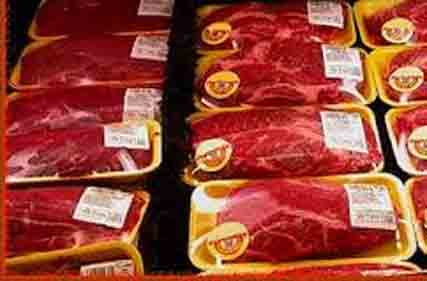
Processors remain constrained as they balance the decision to increase shifts with available cattle numbers and demand in end market.
Beef markets around the world – other than the United States – are seeing softer consumer demand, with global cattle prices now split into two distinct groups: those in North America and Europe, and those in the rest of the world, Rabobank says in its just-released Q3 Global Beef Quarterly.
The report says declining supply and strong consumer demand in the US is driving cattle prices higher, while lower domestic beef supply has also held up prices in Canada and Europe. In most other regions, however, the opposite – increased supply and lower demand – is making prices softer.
Report lead author, Rabobank senior animal protein analyst Angus Gidley-Baird said US cattle prices have increased almost 30 per cent over the past 12 months, while Australian cattle prices have dropped by more than 30 per cent.
“This price spread is the largest we have seen in the past 10 years,” he said.
“Such a separation in prices will have consequences for beef exporters’ competitiveness, and we expect to see some shift in trade volumes as a result.”
A consistent theme across most markets – other than the US – is softer consumer demand and “full supply chains”.
In a number of regions, particularly in Asian countries, beef purchases made through 2022 and into 2023 in anticipation of recovery from Covid have not been consumed, the report says. These are now part of growing stock levels that also include other proteins.
“Softer consumer demand is making it harder to move these volumes through the system,” Mr Gidley-Baird said.
Australia
After falling for most of the year, Australian cattle prices had levelled out in mid-June, the report said.
Mr Gidley-Baird said the market had “seen heavy steer prices rise towards the end of July before dropping again. Meanwhile national saleyard restocker steers have drifted down slightly in August. The EYCI (Eastern Young Cattle Indicator) was down 45 per cent year-on-year for the month of August to average AUD 5.40/kg”.
Through May and June, prices had eased on producer concern about the seasonal outlook, which added additional cattle to the market, he said.
“At the same time, producer buying activity dropped as cattle numbers were building, processing capacity remains constrained and consumer markets are still soft. This saw prices fall to their lowest levels in five years through July. But with some rain through cattle-producing areas in July, stability returned to the market,” Mr Gidley-Baird said.
Weekly national slaughter volumes for year to date (as week 33) were up 23 per cent on 2022 volumes with the increased cattle inventory flowing through to finished cattle numbers.
“Processors remain constrained as they balance the decision to increase shifts with available cattle numbers and demand in end markets. As such, weekly cattle slaughter has been range bound at around 120,000 per week. Our expectations are that when supply chains start to clear and product starts to move more freely, given the additional cattle numbers on the ground, we will see processing capacity lift and Australian production take another step up,” Mr Gidley-Baird said.
Australian export volumes rise
For Australia, the Q3 2023 Beef Quarterly says, export data for July shows beef export volumes up 30 per cent year on year.
However, Mr Gidley-Baird said, markets are mixed, with congestion generally limiting volumes to Asian markets, such as Japan, while strong demand in the US and an increase in Australian cow slaughter is seeing stronger volumes exported to the US – up 103 per cent for July.
“Australian live cattle exports are down 17 per cent for the year to date (July), but we see this more as a reflection of lower Australian cattle numbers in northern Australia where the rebuild has been slower,” he said.
High livestock numbers
Mr Gidley-Baird notes Q2 Australian cattle slaughter numbers were up 16 per cent year on year, while 1H slaughter numbers were also up 16 per cent compared with the first half of 2022 year.
“While not record levels, you can see that they are approaching the five-year average and given constraints on processing capacity at the moment – these volumes will be testing throughput,” he said.
-Rabobank
